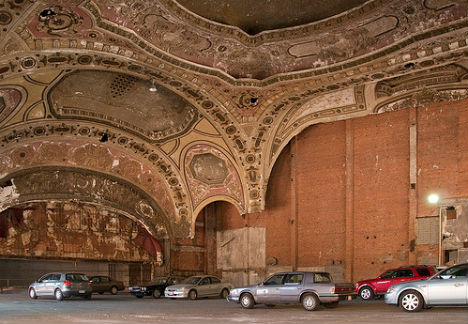
It was built upon the birthplace of the Ford automobile, so perhaps it’s fitting that Detroit’s Michigan Theater is now a parking lot – except that such a use seems to be such a terrible waste for such a stunning historic structure. Built in 1926 alongside the connected 13-story Michigan Building office tower, the 4,000-seat Michigan Theater has been left to decay, another casualty in Detroit’s long decline since its heyday as a car-manufacturing mecca.
(above image via: bourbonbaby)

(images via: wikipedia)
“It is not merely a theatre for Detroit,” John H. Kunsky, the theater’s owner, told The Detroiter in August 1926. “It is a theatre for the whole world. It is designed to be the great showplace of the middle west.” It was described in the press as “a jewel”, and “the world’s finest”. The auditorium featured 10-foot crystal chandeliers that hung eight floors above the seats, and the mezzanine was open to black-tie guests only. But by the mid-1960s, the Michigan Theater was among dozens in the city to close due to dwindling profits, and though it was saved from the wrecking ball in 1967, its glory days were over.
(image via: decojim)
Ironically, one of the factors that forced the closure of the opulent theater was a lack of parking. The theater faced stiff competition from modern nearby theaters that offered plenty of parking space. After a brief interlude as a music venue, during which it drew some of the industry’s biggest names, the Michigan Theater was gutted. While the shell of the building remained intact, it was filled with a three-level, 160-space parking deck.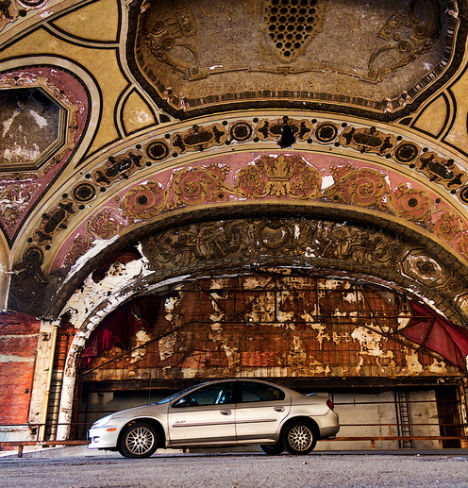
(image via: detroitderek)
One perk to the theater’s latest incarnation is that one need not be an intrepid urban explorer (which often includes law-breaking and physical danger) to get a good look at these modern ruins. A paltry parking fee will get you up-close-and-personal with peeling gilded walls, a crumbling ticket booth, the remains of an upper balcony and a shredded bit of red curtain. See more photos of the decaying interior at DetroitFunk.com
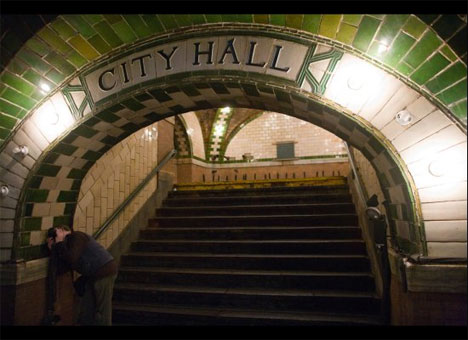
As all urban exploration enthusiasts know, there are hidden wonders all around us – particularly in rich metropolitan landscapes like New York City. The City Hall subway stop is well-known to NYC history buffs, but until now it hasn’t been easy to catch a glimpse of this unique bit of New York. Recently, a change in Transit Authority rules have made it possible for anyone to see the long-abandoned station – as long as you don’t mind seeing it from a moving train.
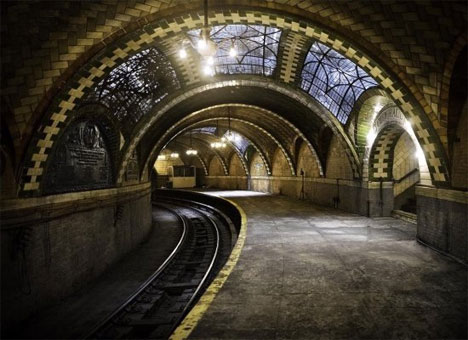
The City Hall station was meant to be the crown jewel in the city’s new subway system. It was opened in 1904 as the southern terminal of the Manhattan Main Line (which is now part of the IRT Lexington Avenue Line). Located beneath the public area in front of City Hall, the station has always been considered the most beautiful in the city.

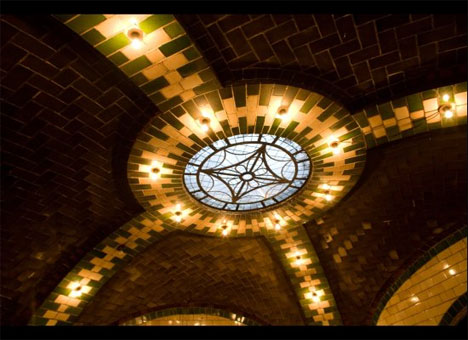
Using an unusually luxurious style of architecture along with colored glass tilework, beautiful skylights and dignified brass chandeliers, the station was undoubtedly unique. Although it was the focus of the subway system groundbreaking ceremony in 1904, City Hall station eventually fell into disuse.
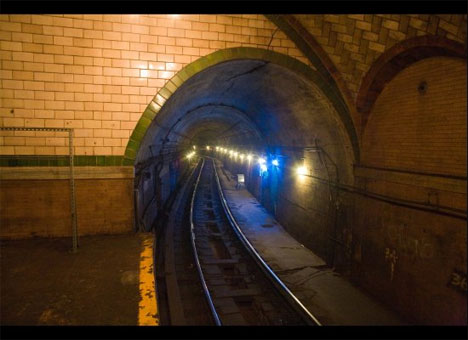
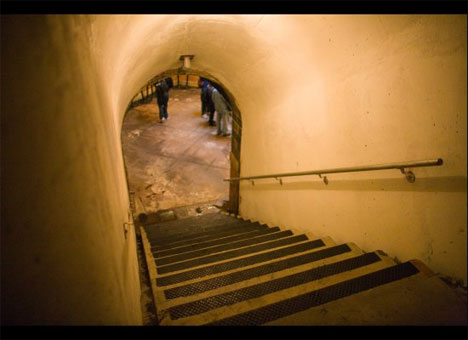
By 1945, only around 600 people per day were being served by the elegantly appointed station. As the trains grew longer and added doors in the middle of the cars, the City Hall platforms were no longer suitable. There were now unsafe gaps between the train cars and the platform; in other stations, the platforms were rebuilt or extended, but this wasn’t an option in the tightly-curved City Hall station.
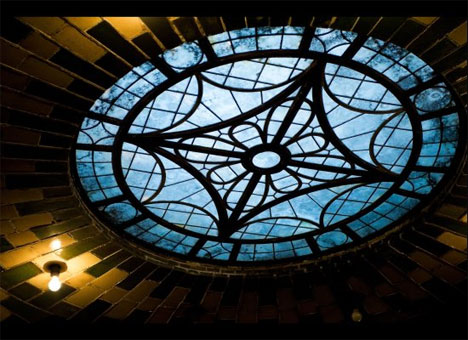
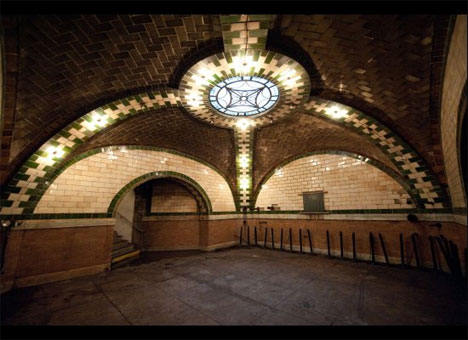
Rather than undertaking a very costly renovation of the station which was hardly used by the public, the city decided to close it down. The station’s last day of service was December 31, 1945. In the following decades, the station was still used as a loop station for the number 6 train, although passengers were forced to get off at the Brooklyn Bridge station just before the train passed through City Hall.
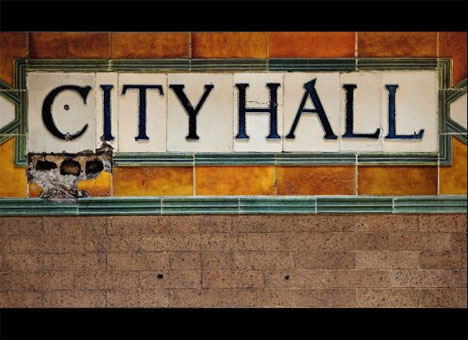
Recently, the MTA changed the rules to allow passengers to ride through the gorgeous City Hall station. Although the station is still closed to passengers, you can get a glimpse of the former glory of this interesting piece of New York history by sitting back and relaxing while the number 6 makes it loop.

It’s been called the Dubai of northern China, showered with wealth, packed with public infrastructure and located near to precious natural resources in a region plagued by water-supply troubles. But the urban center of Ordos City, known as ‘Kangbashi New Area’, has been mostly deserted for five years. Kangbashi isn’t a ghost town due to economic issues, contamination or any other common cause of such abandonment – the government simply can’t convince people to move there.
Built for 1 million people and currently inhabited by just a few thousand (despite a government claim of 28,000 residents, who are more likely just commuting workers), Kangbashi is filled with brand new buildings. One apartment building after another perches on the edge of streets that rarely see traffic, skyscrapers stand empty and over $5 billion worth of public buildings are unused and unstaffed.
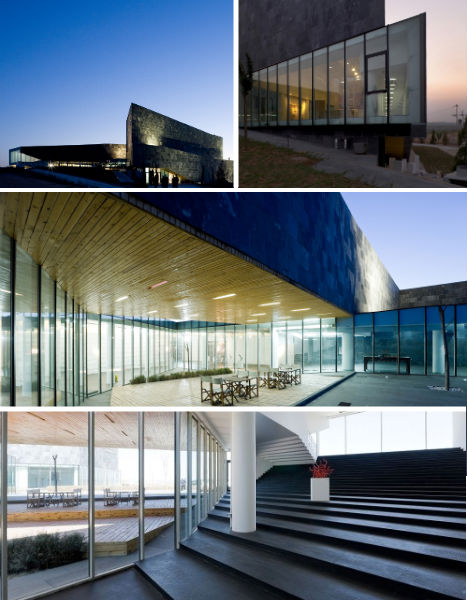
(images via: archdaily)
One notable architectural project, the Ordos Art Museum, was the first structure to go up in the new civic center. Its ethereal location on a stretch of sand dunes along a lake makes it all the more visually striking. But this 29,000-square-foot exhibition and research space is just accumulating dust until the city’s hoped-for residents move in.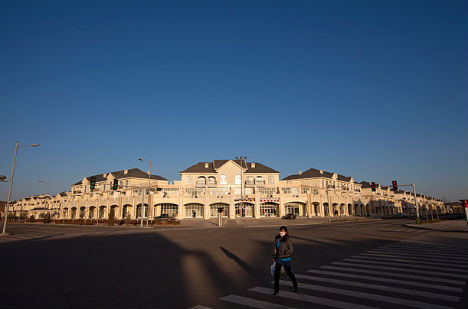
(image via: time)
Even now, construction on Kangbashi homes, businesses and public buildings still continues. City officials are confident that it’s just a matter of time before many of the 1.5 million residents of Ordos proper, who live 15 miles away in the old section of town, see the light. The Ordos city government has already moved its offices there, but that’s the extent of life in the new town.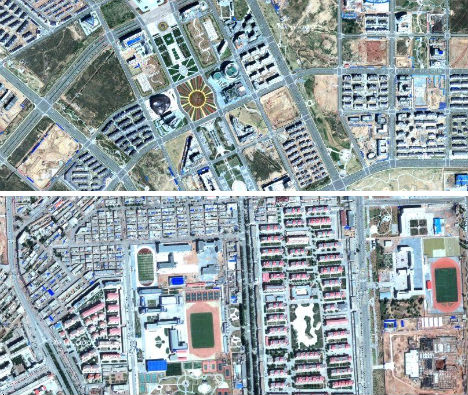
(image via: google maps)
“It’s pretty lonely here,” Li Li, the marketing manager of an elegant restaurant in Kangbashi’s mostly vacant Lido Hotel, told The New York Times. “Most of the people who come to our restaurant are government officials and their guests. There aren’t any common residents around here.”
(image via: time)
Kangbashi’s local economy should be flourishing, given its close proximity to abundant natural resources like natural gas and coal. As in much of the rest of China, real estate in Ordos is booming, and the apartments in Kangbashi aren’t empty for lack of buyers.
(image via: time)
Investors have snapped up nearly every available residence, confident that they’ll eventually see a big return. But it’s exactly this activity that has analysts worried about a speculative real estate bubble that will inevitably see a painful pop.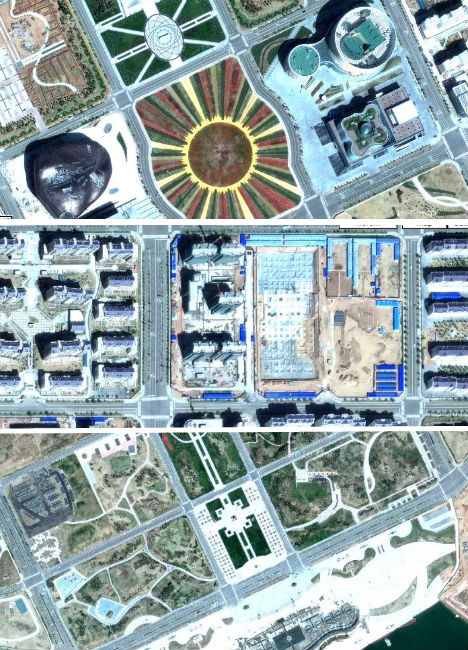
(images via: google maps)
On Google Maps, you can explore the vacant city’s complex layout, intricate landscaping and wealth of public spaces like parks, swimming pools and a massive town square. The land is still raw in many areas as construction marches on, and what few cars can be seen are clustered around government buildings. New highways cut into sparsely populated countryside.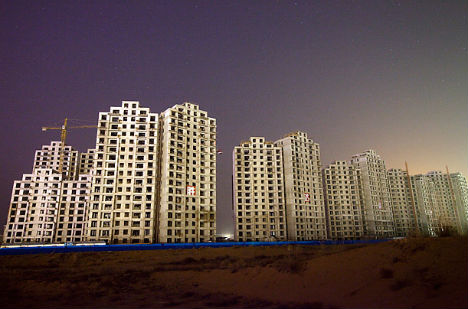
(image via: time)
So why don’t people want to live here, in a sparkling state-of-the-art city filled with modern architecture? Mostly, for now, moving to Kangbashi is an inconvenience. The new district is a thirty-minute drive from the old district where the bulk of Ordos residents still live, and the slow pace of relocation has stalled important supporting services like restaurants and markets.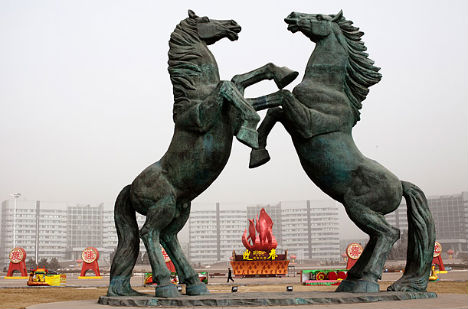















0 comments:
Post a Comment